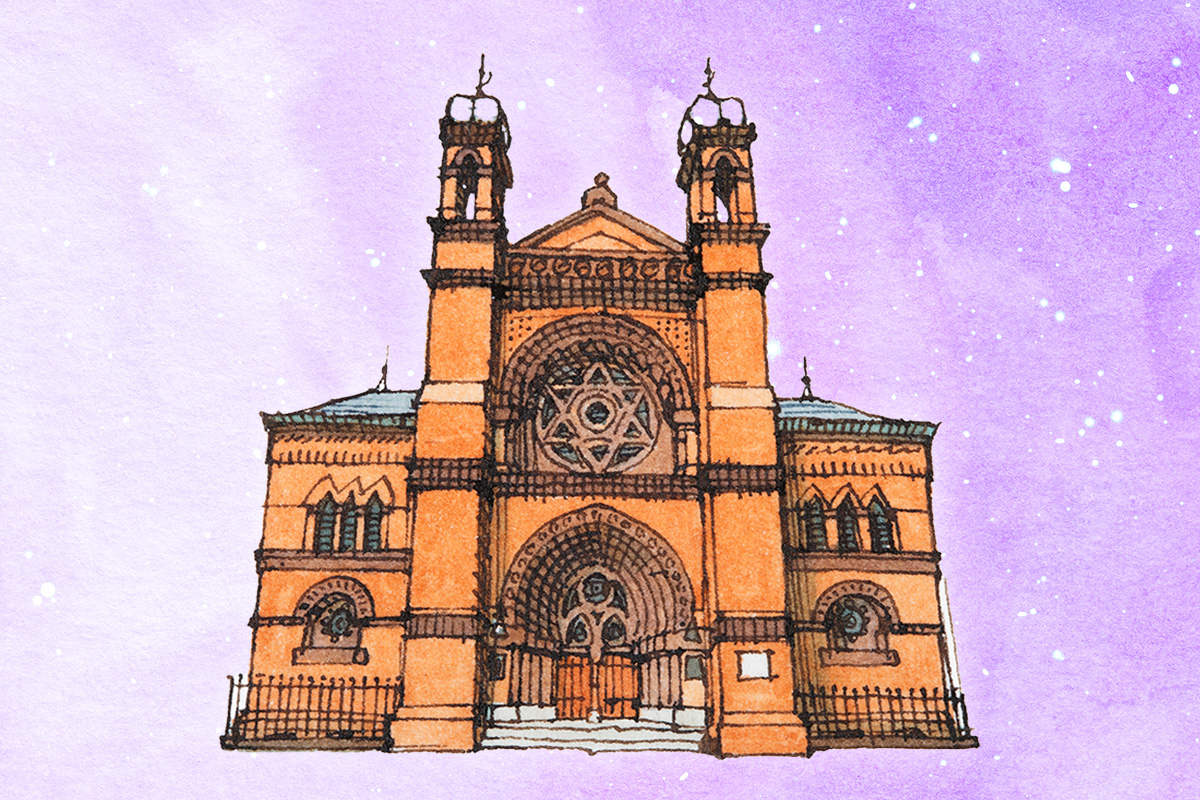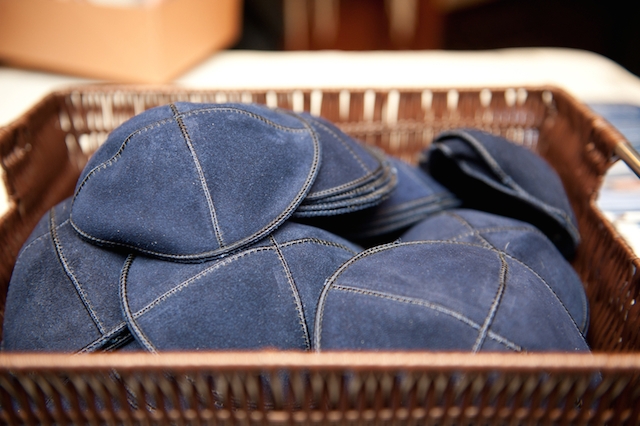So, you’ve never attended services at a synagogue, or it’s been awhile and you need a refresher course?
Knowing what to expect ahead of time will ensure that your experience is a comfortable and positive one. While this article focuses on what to wear and do — and some of the people you will see — we recommend you also consult our Guided Tour of the Synagogue and Highlights of Shabbat Morning Worship.
Keep in mind that services (and service lengths) vary widely from congregation to congregation, depending on a synagogue’s denomination (Orthodox, Conservative, Reform etc.), its leadership and its unique customs or traditions. Dress codes — and attitudes about small children and whether or not it is acceptable to whisper with your neighbor — also vary widely. To learn more about the particular synagogue you will attend, you may want to consult its website or speak to a friend who is a member or has been there recently.
General Expectations for Synagogue Behavior
1. Dress: Guests at a bar/ celebration generally wear dressy clothes — for men, either a suit or slacks, tie, and jacket, and for women, a dress or formal pantsuit. In more traditional communities, clothing tends to be dressier; women wear hats and are discouraged from wearing pants.

Help us keep Jewish knowledge accessible to millions of people around the world.
Your donation to My Jewish Learning fuels endless journeys of Jewish discovery. With your help, My Jewish Learning can continue to provide nonstop opportunities for learning, connection and growth.
2. Arrival time: The time listed on the bar/bat mitzvah invitation is usually the official starting time for the weekly Shabbat, or Sabbath, service. Family and invited guests try to arrive at the beginning, even though the bar/bat activities occur somewhat later in the service; however, both guests and regular congregants often arrive late, well after services have begun.
3. Prayer shawl: The tallit (tall-EET or TALL-is), or prayer shawl, is traditionally worn by Jewish males and, in liberal congregations, by Jewish women as well. Because the braided fringes at the four corners of the remind its wearer to observe the commandments of Judaism, wearing a tallit is reserved for Jews. Although an usher may offer you a tallit at the door, you may decline it if you are not Jewish or are simply uncomfortable wearing such a garment.
4. , or yarmulke: A kippah (KEEP-ah) or head covering (called a yarmulke in Yiddish), is traditionally worn by males during the service and also by women in more liberal synagogues. Wearing a kippah is not a symbol of religious identification like the tallit, but is rather an act of respect to God and the sacredness of the worship space. Just as men and women may be asked to remove their hats in the church, or remove their shoes before entering a mosque, wearing a head covering is a non-denominational act of showing respect. In some synagogues, women may wear hats or a lace head covering.
5. Maintaining sanctity: All guests and participants are expected to respect the sanctity of the prayer service and by:
- Setting your cell phone or beeper to vibrate or turning it off.
- Not taking pictures. Many families hire photographers or videographers and would be pleased to take your order for a photo or video memento. In traditional settings, photography is strictly forbidden on Shabbat.
- Not smoking in the sanctuary, inside the building, or even on the synagogue grounds.
- Not writing.
- Not speaking during services. While you may see others around you chatting quietly–or even loudly–be aware that some synagogues consider this a breach of decorum.
6. Sitting and standing: Jewish worship services can be very athletic, filled with frequent directions to stand for particular prayers and sit for others. Take your cue from the other worshippers or the rabbi’s instructions. Unlike kneeling in a Catholic worship service–which is a unique prayer posture filled with religious significance–standing and sitting in a Jewish service does not constitute any affirmation of religious belief, it is merely a sign of respect. There may also be instructions to bow at certain parts of the service, and because a bow or prostration is a religiously significant act, feel free to remain standing or sitting as you wish at that point.
7. Following along in the prayerbook: Try to follow the service in the siddur, or prayerbook, and the chumash, or Bible, both of which are usually printed in Hebrew and English. Guests and congregants are encouraged to hum along during congregational melodies and to participate in the service to the extent that they feel comfortable. If you lose the page, you may quietly ask a neighbor for help (although it is better not to interrupt someone in the middle of a prayer). During the Torah service, the entire congregation is encouraged to follow the reading of the weekly Torah portion in English or Hebrew.
Who Participates in the Service
“Rabbi” means teacher. The major function of a rabbi is to instruct and guide in the study and practice of Judaism. A rabbi’s authority is based solely on learning.
A cantor has undergone years of study and training in liturgy and sacred music. The cantor leads the congregation in Hebrew prayer.
The “Emissary of the Congregation” ( Tzibbur)
The shaliach tzibbur is the leader of congregational prayers, be it the cantor or another congregant. Every Jewish prayer service, whether on a weekday, Shabbat, or festival, is chanted in a special musical mode and pattern. The shaliach tzibbur must be skilled in these traditional musical modes and familiar with the prayers. Any member of the congregation above the age of bar/bat mitzvah who is familiar with the prayers and melodies may serve as shaliach tzibbur.
The
The gabbai, or sexton, attends to the details of organizing the worship service. The gabbai finds a shaliach tzibbur, assigns aliyot, and ensures that the is read correctly.
The Lay Leaders
Members of the congregation may participate in all synagogue functions and leadership roles. Any knowledgeable Jew is permitted and encouraged to lead the prayers, be called up to say a blessing over the Torah (called “receiving an aliyah“), read from the Torah, and chant the Haftarah.
Bar/Bat Mitzvah and Family
If a bar or bat mitzvah is taking place at services, the bar/bat mitzvah child will participate in a variety of ways, depending on the congregation’s customs. The bar/bat mitzvah may do some or all of the following: lead services, read (often chanting) from the Torah and/or Haftarah, deliver a dvar Torah — a speech about the Torah portion read that day. Family members are usually honored by being called up to say a blessing over (or read from) the Torah, and the bar/bat mitzvah child’s parents often deliver a speech.
Sign up for My Jewish Learning’s RECHARGE, a weekly email with a collection of Shabbat readings and more to enhance your day of rest experience.
aliyah
Pronounced: a-LEE-yuh for synagogue use, ah-lee-YAH for immigration to Israel, Origin: Hebrew, literally, “to go up.” This can mean the honor of saying a blessing before and after the Torah reading during a worship service, or immigrating to Israel.

Help us keep Jewish knowledge accessible to millions of people around the world.
Your donation to My Jewish Learning fuels endless journeys of Jewish discovery. With your help, My Jewish Learning can continue to provide nonstop opportunities for learning, connection and growth.






